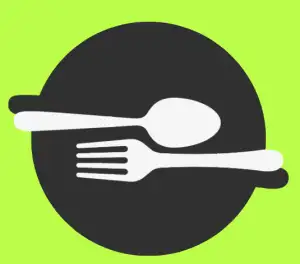Unlocking the Secrets: The Best Time to Harvest Rhubarb at Home

Understanding Rhubarb Harvesting:
Rhubarb is a perennial vegetable that thrives in cooler climates and is typically ready for harvest in the spring. The plant's stalks are the edible part, while the leaves are toxic and should never be consumed. Rhubarb plants need to be established for at least two years before they can be harvested to ensure a strong root system. Proper harvesting techniques are essential to promote regrowth and ensure a bountiful harvest year after year.
Early Spring Harvest:
In early spring, rhubarb plants begin to emerge from dormancy. This is the perfect time to start harvesting young stalks. Look for stalks that are at least 10-15 inches long with vibrant colors. Gently pull the stalks from the base, twisting slightly to detach them from the plant. Avoid cutting the stalks as this can leave behind a stub that may invite pests and diseases. Remember not to harvest more than one-third of the plant at a time to ensure continued growth throughout the season. Early spring rhubarb tends to be more tender and less fibrous, making it ideal for fresh eating or quick cooking methods like stewing or baking in pies.
Mid-Spring Harvest:
As the days grow longer and warmer in mid-spring, rhubarb plants continue to thrive. This is an ideal time for harvesting rhubarb stalks that are of medium thickness and vibrant color. Stalks should be firm to the touch and easily snap off when pulled gently. Avoid harvesting any stalks that appear thin or discolored, as they may not be fully matured.
It's important to cut the rhubarb stalks at ground level using a sharp knife or scissors to avoid damaging the plant. Be sure to leave at least one-third of the stalks on the plant to ensure continued growth and future harvests. Remember, overharvesting can weaken the plant and reduce its productivity in the long run.
By harvesting rhubarb in mid-spring, you can enjoy tender and flavorful stalks that are perfect for pies, jams, and other culinary delights. Stay tuned for our next section on late spring harvesting for even more tips on maximizing your rhubarb harvest this season!
Late Spring Harvest:
As late spring approaches, rhubarb plants have fully matured, making it the ideal time for harvesting. The stalks will be thicker and more vibrant in color compared to earlier in the season. To harvest at this stage, simply grasp the stalk near the base and gently pull it away from the plant. Be sure to twist slightly to detach it cleanly without damaging the plant.
It's important not to harvest too late into summer as the stalks can become tough and less flavorful. By opting for a late spring harvest, you can enjoy tender and delicious rhubarb that is perfect for various culinary creations. Remember, harvesting responsibly ensures a bountiful crop for years to come.
Signs of Readiness:
Before harvesting rhubarb, it's crucial to know the signs that indicate the plant is ready for picking. Look for thick, firm stalks with vibrant colors like deep red or pink. The stalks should be at least 10-15 inches long and have a diameter of about an inch. Avoid harvesting thin or spindly stalks as they indicate immaturity. Additionally, the leaves should be fully unfurled and healthy-looking. Remember, only harvest rhubarb stalks; the leaves are toxic and should never be consumed.
Harvesting Techniques:
When harvesting rhubarb, it is essential to use a sharp knife or garden shears to cut the stalks. Avoid pulling the stalks as this can damage the plant. Cut the stalks at the base near the soil level, ensuring a clean cut without leaving any stubs behind. It's recommended to harvest only about one-third of the plant at a time to allow for continued growth throughout the season. Remember to discard any leaves as they are toxic and should not be consumed. Harvesting in this manner will promote healthy regrowth and ensure a bountiful harvest for years to come.
Storing Rhubarb:
Once you have harvested your rhubarb, it's important to store it properly to maintain its freshness and flavor. To store rhubarb, start by trimming the leaves and any damaged parts from the stalks. Then, wash the stalks thoroughly and allow them to dry completely.
Next, wrap the rhubarb stalks in a damp paper towel to help retain moisture. Place the wrapped stalks in a plastic bag or airtight container before storing them in the refrigerator. Rhubarb can be stored in the fridge for up to two weeks.
Alternatively, you can freeze rhubarb for longer storage. To freeze rhubarb, cut the stalks into small pieces and blanch them in boiling water for 1-2 minutes before quickly transferring them to an ice bath. Once cooled, drain the rhubarb and pack it into freezer-safe bags or containers before placing them in the freezer.
Properly stored rhubarb will maintain its quality for use in various culinary creations such as pies, jams, sauces, and more.
Final Tips for Successful Harvesting:
1. Avoid overharvesting: It's crucial to leave at least a third of the rhubarb plant untouched during each harvest to ensure its continued growth and health.
2. Use sharp tools: When harvesting rhubarb, make sure to use a sharp knife or scissors to cleanly cut the stalks without causing unnecessary damage to the plant.
3. Remove flower stalks promptly: If you notice flower stalks starting to form, remove them immediately. Allowing rhubarb plants to flower can divert energy away from producing edible stalks.
4. Regularly fertilize and water: To promote healthy growth and abundant harvest, make sure to fertilize your rhubarb plants in early spring and provide consistent watering throughout the growing season.
5. Monitor for pests and diseases: Keep an eye out for common pests like aphids and diseases such as crown rot. Promptly address any issues to protect your rhubarb crop.
By following these final tips, you can ensure a successful rhubarb harvest year after year, providing you with delicious stalks for pies, jams, and other culinary delights.
Published: 21. 04. 2024
Category: Food



